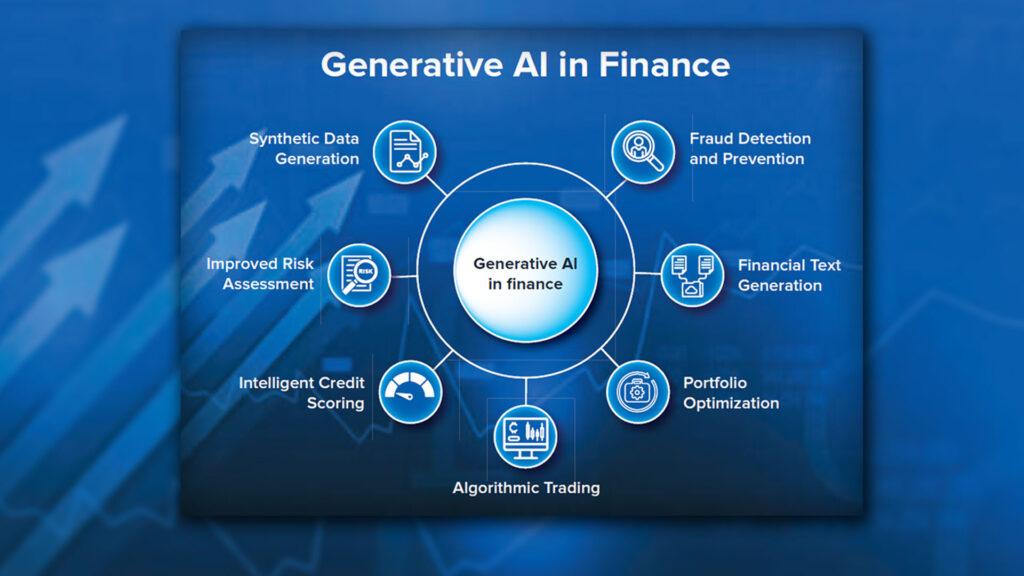In an age defined by rapid technological advancements, the landscape of banking is undergoing a seismic shift, propelled by the capabilities of generative artificial intelligence. This innovative force is not just a trend; it’s a transformative power reshaping traditional banking practices and redefining customer experiences. As financial institutions strive to remain competitive in a digital-first world, generative AI emerges as a game changer, offering new avenues for efficiency, personalization, and security. In this article, we explore four pivotal roles that generative AI is playing in revolutionizing the banking sector, illuminating how these developments are not just enhancing existing processes but also fostering a paradigm shift toward a more intelligent and responsive financial ecosystem. Join us as we delve into the future of banking, where technology and finance converge in unprecedented ways.
Empowering Personalized Customer Experiences Through AI Innovation
As the banking sector increasingly embraces the power of artificial intelligence, financial institutions are finding new ways to harness generative AI to create tailored customer experiences. By analyzing vast amounts of data, AI can uncover insights into individual customer preferences and behaviors, allowing for a more personalized interaction model. This capability extends to various banking services, enabling institutions to design bespoke offerings that resonate with client needs. Through advanced algorithms, banks can engage customers with personalized financial advice, targeted promotions, and customized communication strategies that enhance loyalty and satisfaction.
Furthermore, the implementation of AI-driven chatbots and virtual assistants is transforming customer service in banking. These intelligent systems can offer 24/7 assistance, addressing customer inquiries with impressive accuracy and speed. They can predict customer questions based on previous interactions and provide real-time solutions, creating a seamless support experience. The following table highlights how generative AI can personalize interactions:
| AI Application | Customer Benefit |
|---|---|
| Personalized Financial Advice | Custom-tailored recommendations based on individual financial goals. |
| Targeted Promotions | Offers based on previous spending habits and preferences. |
| AI Chatbots | Instant responses to inquiries, enhancing customer support. |
| Behavioral Analysis | Anticipating needs through data-driven insights. |

Streamlining Operations and Enhancing Efficiency with Generative AI
In the fast-paced world of banking, operational efficiency and seamless processes are paramount. Generative AI is poised to redefine the landscape by optimizing workflows and automating tedious tasks. This technology can analyze vast amounts of data in real time, allowing financial institutions to streamline their operations significantly. By harnessing this AI-driven approach, banks can minimize human error, reduce processing times, and ultimately enhance customer satisfaction.
Implementing generative AI opens up a world of opportunities for enhancing productivity. For instance, chatbots powered by advanced AI can handle customer inquiries around the clock, freeing up staff to focus on more complex tasks. Moreover, many routine compliance processes can be automated, ensuring adherence to regulatory standards without the headache of manual oversight. The implications are substantial, translating to improved resource allocation and quicker decision-making capabilities, as illustrated in the table below:
| Benefit | Impact on Operations |
|---|---|
| Improved Accuracy | Reduces errors in transactions and record-keeping. |
| Time Efficiency | Speeds up processing times for loan approvals and customer onboarding. |
| Cost Reduction | Decreases operational costs by minimizing manual labor. |

Reinforcing Security Measures and Fraud Detection Capabilities
In an era where cyber threats are constantly evolving, financial institutions are leveraging generative AI to bolster their security frameworks and enhance fraud detection methodologies. By employing advanced machine learning algorithms, banks can swiftly analyze vast amounts of transactional data and identify patterns indicative of potentially fraudulent activity. This proactive approach allows for real-time monitoring, enabling banks to respond to suspicious transactions before they escalate into serious breaches. Key components of this sophisticated security ecosystem include:
- Anomaly Detection: AI systems can distinguish between normal and anomalous transaction behaviors, flagging unusual patterns for further inspection.
- Predictive Analytics: By utilizing historical data, generative AI can predict future fraud scenarios, allowing banks to implement preventive measures.
- Automated Intelligence: Automation minimizes human intervention, reducing response time and enhancing the consistency of fraud investigations.
Furthermore, the integration of AI into security protocols can enhance customer trust as banks reassure their clients of their commitment to protecting sensitive information. With its capability to continuously learn and adapt, generative AI empowers financial institutions to not only respond to threats more efficiently but also to anticipate them. The table below highlights the comparative advantages of traditional fraud detection methods versus AI-driven systems:
| Aspect | Traditional Methods | AI-Driven Systems |
|---|---|---|
| Speed of Detection | Manual reviews | Real-time analysis |
| Data Processing | Limited scope | Large-scale analysis |
| Adaptability | Static algorithms | Dynamic learning |
| False Positive Rate | Higher rate | Lower rate |

Driving Strategic Decision-Making with Data-Driven Insights
The integration of generative AI into banking operations is reshaping the landscape of strategic decision-making. By leveraging vast amounts of data, financial institutions can gain insights that drive informed choices, tailor services, and strengthen customer relationships. With tools like predictive analytics and real-time data processing, banks can identify trends, assess risks, and optimize assets far more efficiently than traditional methods. This shift towards a data-centric approach fosters a culture of responsiveness, enabling banks to adapt strategies based on customer behavior and market shifts.
Furthermore, decision-making is enhanced through the use of sophisticated algorithms that analyze customer profiles and transaction histories to deliver personalized services. By segmenting customers based on behavioral patterns, banks can target offerings more effectively. This refinement is supported by AI’s ability to provide actionable insights, leading to more precise marketing campaigns, retention strategies, and enhanced operational efficiencies. As a result, financial institutions are not only improving their bottom line but also cultivating a loyal customer base through data-driven strategies that resonate with individual needs.
| Data-Driven Insights | Impact on Decision-Making |
|---|---|
| Predictive Analytics | Identifies trends and forecasts market changes |
| Customer Segmentation | Enables targeted marketing and personalized services |
| Risk Assessment Tools | Enhances accuracy in evaluating creditworthiness |
| Real-Time Data Processing | Facilitates immediate responses to customer inquiries |
In Summary
As we stand on the cusp of a new era in the financial landscape, it becomes evident that generative AI is not merely a tool for enhancement but a catalyst for transformation. Embracing its potential opens doors to unprecedented efficiencies, personalized services, and innovative solutions that can redefine the banking experience for consumers and institutions alike.
The four transformative roles we explored—enhanced customer interaction, risk management innovation, streamlined operations, and bespoke product offerings—serve as a testament to the dynamic capabilities that generative AI brings to the table.
As banking continues to evolve, it is essential for industry leaders to remain adaptable and forward-thinking, leveraging these advancements to foster greater trust and engagement with customers. The future holds immense promise, and those who embrace this technology will not only navigate the complexities of modern finance but will also lead the charge toward a more inclusive and efficient banking system.
In this rapidly changing environment, one thing is clear: the revolution in banking has only just begun, and generative AI is poised to be at the forefront, shaping the journey ahead.
